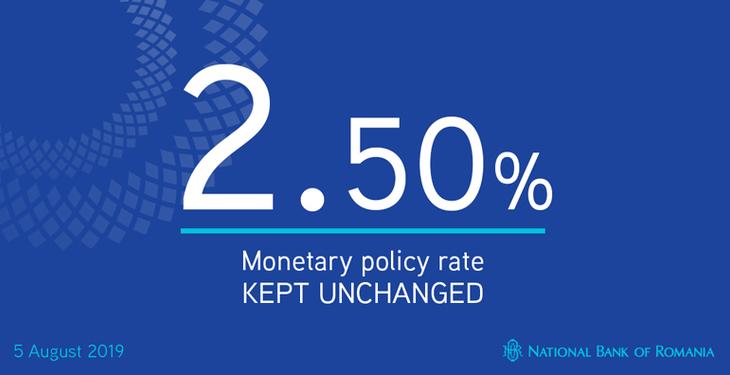The NBR Board decided to keep unchanged the monetary policy rate at 2.50 percent, while maintaining strict control over money market liquidity. In June 2019, the annual CPI inflation rate went down to 3.8 percent (from 4.1 percent in May), slightly below the forecast, but above the variation band of the target. This owed to the significant drop in the prices of vegetables and fuels. Compared to end-Q1, when it had stood at 4.03 percent, the annual inflation rate decreased owing solely to developments in June. Behind the slowdown versus March stood entirely the exogenous CPI components, especially the dynamics of fuel prices.
By contrast, the annual adjusted CORE2 inflation rate (which excludes from the CPI inflation administered prices, volatile prices, and tobacco product and alcoholic beverage prices) reported faster growth from 2.7 percent in March to 3.3 percent in June. Apart from the impact of the new tax levied on telecom companies and of the hike in some international agri-food prices, the advance mirrors rising demand-pull and wage cost-push inflationary pressures, alongside the upward adjustment of short-term inflation expectations.
The average annual CPI inflation rate continued to decline to 4.1 percent in June from 4.2 percent in May 2019; calculated based on the Harmonised Index of Consumer Prices, the average annual inflation rate went down to 4.0 percent from 4.1 percent December 2018 through May 2019.

